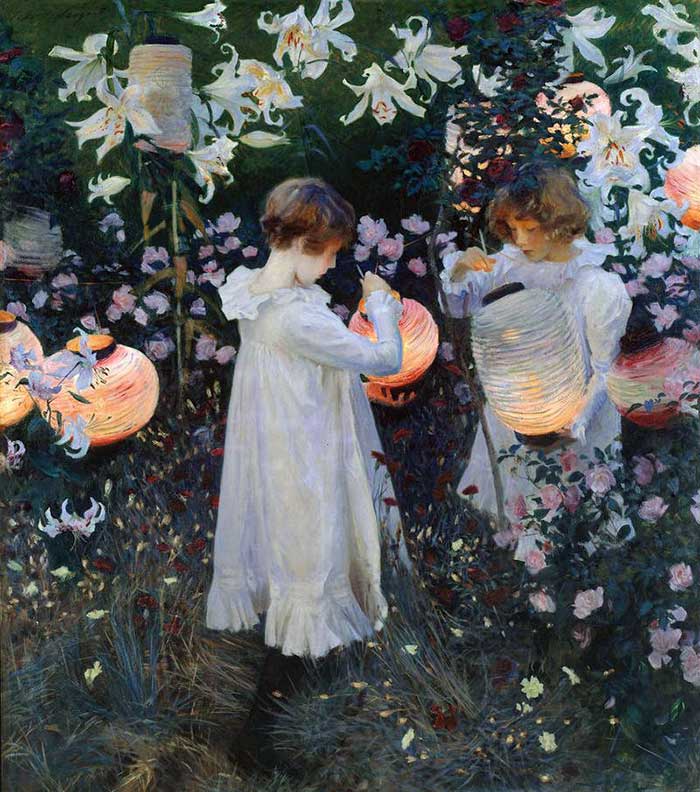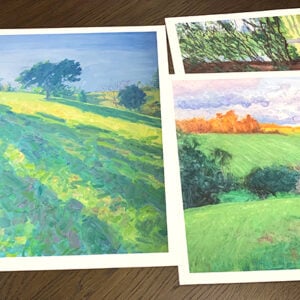The age-old question – are black and white actually colors? This is an interesting question to ask, especially for us artists, as it raises some interesting discussions about what color is and how we see color. The answer varies depending on your perspective. I discuss why below.

- From a Scientific Perspective
- A Painter’s Perspective
- How to Use Black and White
- Want to Learn More?
- Thanks for Reading!
From a Scientific Perspective
From a purely scientific perspective, one might question the existence of black and white. But before I go into that, let’s first take a step back and consider how we actually see color. We see color as a result of light wavelengths bouncing off objects and hitting our eyes. Our eyes then translate these wavelengths into what we perceive as color. We are not capable of seeing all the different light wavelengths. The wavelengths we are able to see form what is called the visible spectrum.

Objects do not have an inherent color. A red apple is not red because it is inherently red. It is red because it reflects red wavelengths and absorbs the rest.

So we see color as a result of light. With no light, there is no color. But what does this have to do with black and white? Well, black and white are actually missing from the visible spectrum. That is, they do not have specific light wavelengths. We see black and white as a result of our perception and how we process light. When an object absorbs all wavelengths of light, we see black. So in a sense, black is not a color but rather the absence of color. When all light wavelengths are combined, we see white. Note how this is different to the way our physical paints work, in that when we mix all the colors together, we get mud, not white light. So, if we only take into consideration the visible spectrum of light wavelengths, then black and white do not appear to exist as they do not have specific wavelengths. This is probably how a physicist would think. But that seems like a narrow way of thinking, doesn’t it?
A Painter’s Perspective
As a painter, I am obviously much more interested in the way we perceive things rather than how a physicist may define color. So I prefer to think of color to include all the ways we perceive and interpret light. So that includes black and white. But all this discussion about whether black and white are actually colors has little benefit outside of helping us understand how color works and providing some interesting discussion. We do not even have the privilege of using pure black or white in the painting. Our blacks and whites are actually just near blacks and near whites. Regardless, it is still worth taking the time to ponder over these types of questions. Sometimes, you think you know the answer to what appears to be such a simple question, but once you dig a little deeper, you realize just how complex painting can be.

How to Use Black and White
If you want to see how to use black and white in your paintings, then you should check out the paintings of John Singer Sargent. Some of his paintings are featured earlier in this post. Here are some more Sargent paintings which demonstrate skillful use of black and white. I use the terms black and white very loosely. As noted earlier, it is not possible to paint in absolute black or white. In some of the paintings, the “white” is much closer to a light gray, but appears white in relation to the painting as a whole. That is the power of relativity.




Want to Learn More?
You might be interested in my Painting Academy course. I’ll walk you through the time-tested fundamentals of painting. It’s perfect for absolute beginner to intermediate painters.
Thanks for Reading!
I appreciate you taking the time to read this post and I hope you found it helpful. Feel free to share it with friends.
Happy painting!
Dan Scott

Draw Paint Academy







This post came at such an opportune moment for me. I am painting a large narrative theme where there is quite a bit of “black” in the painting and I have been in a quandary how to paint those areas without losing the life of the subject matter. Reading this and studying Sargent’s masterful handling of shadows and darkness has given me new food for thought. Thank you!
Really glad to read that Laurelle! Good luck with the painting. Dan